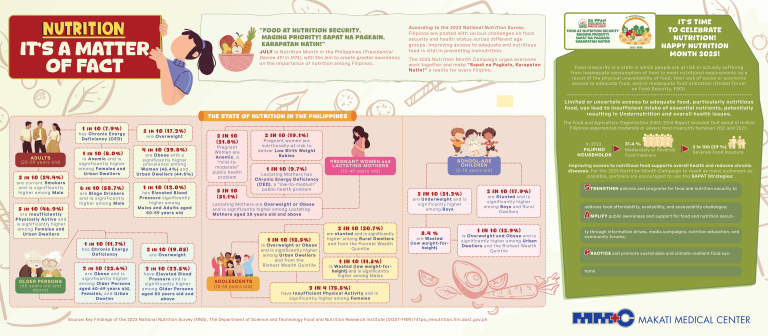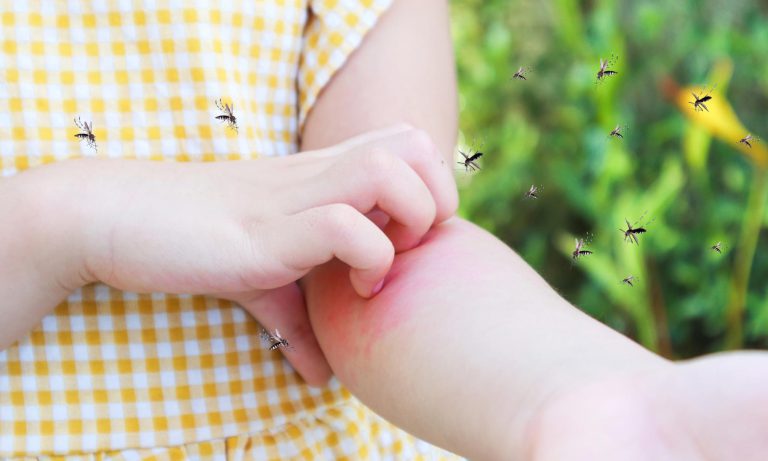The COVID-19 virus can easily spread when an individual inhales a droplet from an infected person who sneezed, coughed, or even simply talked within close proximity.
With its fast transmissibility, the SARS-CoV-2 virus has led to more evolved variants. To date, the World Health Organization (WHO) has four (4) variants of concern (VOC) on their list, which includes the more infectious Delta variant, and additional variants of interest (VOI) for further monitoring, with recently reported Lambda and Mu variants.
These emerging strains have a higher transmission and mortality rate, making it more crucial to ramp up COVID-19 vaccination efforts to stop the spread and ultimately eradicate the disease.
With records to show, vaccines have helped wipe out several illnesses into existence and mitigate the severity of many. Read on to find out how immunization through extensive resources and modern technologies has benefited society over time.
What does it take to eradicate a disease?
Based on successful full immunization campaigns in the past, health professionals and scientists can look into specific characteristics of an illness that can potentially facilitate their eradication.
According to the American Society for Microbiology (ASM), below is a checklist of questions to consider for wiping out infectious diseases:
- Is the disease easily identifiable? The easier an illness is recognized, the faster medical officials can prevent its transmission. Conditions with distinct symptoms and easy diagnosis have a clearer start in an eradication campaign than those requiring more sophisticated analysis methods.
- Does the disease have a non-human reservoir or vector? Immunization plans for illnesses transmitted via human-to-human are more targeted and, therefore, effective. However, if a virus is present in a non-human reservoir or vector, which are pathogen-carrying animals that are not affected by it such as bats, reinfection and further spread are inevitable.
- Is the disease geographically restricted? Viruses spread depending on their hosts’ location. When they live in geographically restricted areas, the disease that comes with it can also be limited within the location. However, outbreaks can still occur when an infectious host travels to places and acquires person-to-person contact.
- Is there a vaccine for the disease? Years of medical data will show that vaccines have brought relief, preventing suffering to countless lives. While they are yet to push all disease transmissions to zero, vaccination strategies are proven effective in eliminating most ongoing illnesses.
Eliminated vs. Eradicated
Both disease elimination and eradication are deliberate efforts in creating a healthy and infection-free environment. While these terms are used interchangeably by many, they vary in scope.
By definition, eradication of a disease is an action that leads to the “permanent reduction to zero of the worldwide incidence of infection caused by a specific agent.” Since the root of the disease is no longer present, intervention measures are no longer required.
On the other hand, disease elimination is more hedge and attainable. It does not require the permanent and global reduction of disease incidence, but rather it achieves restriction to a defined geographic area. With this, measures to prevent the re-emerging or transmission of the virus are still required.
Eradicated Diseases
So far, the WHO has only two (2) eradicated diseases on their list. All thanks to the success of vaccines, smallpox caused by the variola virus (VARV) and rinderpest from the rinderpest virus (RPV) are now entirely wiped out of existence.
Smallpox
Smallpox is a highly contagious ancient disease that induced epidemics throughout human history. People with smallpox were said to experience intense fever and progressive pustular rash. While many survived, they earned large permanent scars on their bodies, and some were even left blind.
In 1796, British doctor Edward Jenner developed the smallpox vaccine, the first against human infectious viruses. This innovation has saved countless lives, as it helped build strong immunity against the disease.
Overall, smallpox infected about 300 million people in the 20th century. Through vaccination, this has become the only human disease successfully eradicated in global health history, with the WHO making it official in 1980. And since 1977, no cases of smallpox have been reported again.
Rinderpest
Also called the cattle plague, rinderpest was a lethal disease infecting cattle and buffalo herds from the 18th to 20th century. Infected animals exhibited symptoms that include fever, mouth wounds, discharge from the eyes and nose, and reduced milk production in cows.
During the rinderpest outbreak, the fatality rate was notably high at 100% on susceptible herds. While the spread did not affect humans, it caused severe livelihood damages in communities, resulting in famines responsible for millions of deaths.
Although the eradication efforts for rinderpest began in 1920, such as animal quarantine and slaughter, it was not until 1960 that an English veterinary scientist named Walter Plowright developed a potent vaccine against it. This vaccination led to rinderpest eradication in 2011, considered the first and only animal disease eradicated globally.
Eliminated Diseases
To date, medical records present a long list of illnesses that vaccines can prevent and eliminate. Here are some of the known diseases that are at near-eradication:
Polio
Polio is a crippling and potentially deadly infectious disease spread from person to person. While most people infected by the poliovirus recover fully, severe cases can invade a sufferer’s brain and spinal cord, causing permanent physical disabilities or paralysis.
In the early 1950s, the first polio vaccine was formulated and circulated for large-scale use, creating a drop in infection incidences by nearly 99% since 1988. Although continued dissemination of these doses has kept many countries polio-free, efforts in several infected areas are still underway to eradicate this disease.
Measles
Like smallpox, measles is a highly contagious viral disease that can lead to serious complications for young children, including blindness, diarrhea, pneumonia, and encephalitis. If left untreated, measles can also have a long-term effect on children’s immune systems, leaving them more vulnerable to other infectious diseases.
Safe, effective, and inexpensive vaccines have been made available since the 1960s. And while measles is still common worldwide, it has greatly decreased by 73% between 2000 and 2018. With this continuous drop, the WHO hopes to achieve full immunization against measles by 2020.
Tetanus
Commonly known as lockjaw, tetanus is a serious infection caused by Clostridium tetani bacteria. This can enter the body through cuts, wounds, or burns, leading to painful muscle contractions in the jaw and neck areas. Severe cases can also result in breathing issues, intense muscle spasms, and even paralysis.
Since people of all ages can get tetanus, the Centers for Disease Control and Prevention (CDC) recommends vaccination with booster shots throughout life. Types of vaccines for this disease include DTaP for babies and children; and Tdap and Td vaccines for adolescents and adults.
Flu
One common respiratory illness is the flu, which is caused by the influenza virus. Depending on one’s immunity system, age, and health status, it can affect people differently. While millions of people catch the flu every year, some cases can lead to hospitalization and even death if the complications become severe.
The CDC notes 7,000 to 26,000 cases of influenza-related hospital confinements in the United States among children ages five (5) years and younger since 2010. Because of this, an annual seasonal flu vaccine is advised to reduce the risk of flu-induced illnesses.
Hepatitis B
Hepatitis B is a type of liver infection caused by the hepatitis B virus. Infected individuals can either experience an acute condition that lasts for a few weeks or a chronic progression of the disease that is critical and lifelong.
Unlike other transmissions influenced by mere proximity, the Hepatitis B virus is spread when an uninfected person comes in contact with the blood or other bodily fluids of someone infected. A series of safe and effective shots are available to provide full protection against this infectious disease.
Mumps
Another contagious viral disease is mumps, best known for bringing swollen cheeks and jaw to affected people. Caused by the rubulavirus, this results in low-grade fever, respiratory problems, and inflammation of the salivary glands.
Mumps can become an airborne disease when respiratory droplets spread. Typically, outbreaks occur among students going on trips and communities observing get-togethers. While highly infectious without a cure, vaccines have helped lower the cases by 99% since its introduction in 1967.
Chickenpox
Although not a life-threatening illness, chickenpox is highly infectious and uncomfortable when caught. The varicella-zoster virus induces fever and itchy blister-like rashes that can spread to around 500 all over the body.
Since children are the most commonly infected demographic by chickenpox, vaccines with a 90% effectivity rate are available to help stop or slow down the spread of the virus. Vaccination will also help strengthen one’s immune system and eliminate health complications the disease may develop.
Malaria
In 2019, the WHO recorded an estimate of 229 million clinical cases and 409,000 deaths due to malaria. This fatal disease is caused by a parasite transmitted from an infected female Anopheles mosquito to humans. If not promptly treated, malaria may result in severe infections, high fevers, and even death.
Today, scientists are working on a malaria vaccine with greater efficacy. In an early clinical trial with 450 participants aged five (5) to 17 months, data from the modified R21 vaccine presents 77% of potency at preventing the disease over one (1) year, showing excellent promise than other shots with relatively low efficacy.
Time to Take a Shot
The technological vaccine advancements in medicine continuously create a long list of diseases that can be eradicated. As the world tries to resume control and reduce the growing COVID-19 cases, getting vaccinated is an effective first step in helping mitigate and eventually solve this global health crisis.
For more vaccination updates, pediatric care, executive check ups, COVID-19-related news, and world-class healthcare services against infectious diseases and other health concerns, contact Makati Medical Center today!












